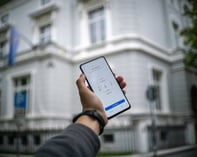Published on
Simplifying the Transition to Remote Learning

Not everyone is familiar, or even comfortable, with an online learning and working format, which higher education institutions need to bear in mind when transitioning to a remote environment. It’s important to adjust structure for what’s best for the school as a whole while also serving the faculty and learners’ best interests. As everyone is just beginning to grasp the remote learning environment, it’s the non-traditional divisions, who have historically focused on serving adults, that have been the driving engine to ensure a smooth transition. With no end date in sight for the coronavirus, these divisions need to continue to serve as a shoulder for higher education to lean on. In this interview, David Schejbal discusses how his division has helped Marquette University transition online, future possibilities of online learning in traditional education and how to prepare for an enrollment increase.
The EvoLLLution (Evo): What role has the digital learning division played over the past few weeks in helping Marquette adapt to the remote teaching and learning environment?
David Schejbal (DS): We have been front and center, working hand in hand with our IT staff to support faculty in converting their face-to-face classes to remote learning.
We’re using the term “remote delivery” or “remote teaching” intentionally to separate it from consciously developed online instruction because we do have a number of programs and courses deliberately created for the online environment. A fully online course takes several months to develop, and it requires instructional designers, media developers and faculty working through a robust pedagogy and curriculum to create a really good course. What we did was essentially triage to make sure that Marquette students are able to finish the spring semester or graduate on time.
For faculty proficient in using D2L, we stood by in case they needed additional support. For faculty uncomfortable with the technology, we advised them to use Microsoft Teams for face-to-face engagements with students. We helped them develop PowerPoint slides to send over email, emailed lecture notes, anything we could do to connect faculty and students. We wanted them to finish out the semester without undermining the quality of education that Marquette prides itself in offering.
Evo: How are ensuring that faculty and learners who are in this environment for the first time, are not equating online learning and remote learning?
DS: There’s no way to ensure that students understand the difference between remote and online learning. The best we can do is to try to make sure that both faculty and students have a positive experience either way. For faculty who are willing to look at teaching online, we’re starting to educate them on what it really means to develop a truly online class.
Evo: What’s been the early feedback for faculty and staff who are operating in this remote environment for the first time?
DS: The logistics of moving everyone online have actually gone remarkably well at Marquette. The first ten days or so were crazy 24/7. We tried hard to support faculty in helping them figure out the transition to teaching at a distance while keeping students comfortable and calm as they waited for its delivery.
The biggest challenge, once you get past the logistics, is the emotional stress. We’re far outside the realm of converting classes to distance delivery. Students and faculty are dealing with anxiety, discomfort, ambiguity, lack of structure, feeling confined and restricted… The same thing that you and I are experiencing—everybody else is too.
Evo: How are some non-academic aspects of the student experience—like career counseling, personal counseling, support and retention services—being transitioned into this remote learning environment?
DS: What we’re trying to encourage are some key transition values, rather than taking a single approach to transitioning everything at once. Simplicity, clarity and consistency are things we’re incorporating into our various processes.
One thing we know is that most people are feeling overwhelmed. They’re feeling somewhat lost because of the situation’s tremendous ambiguity day-to-day changes. We want to provide them with some structure and good, simple communication to lighten that load.
Evo: Have you seen many cancellations with the shift to remote learning or are learners largely comfortable with this move?
DS: By and large, we have seen everybody pull together and transition. Very few students suddenly dropped out, and we don’t know what happened to them. But that’s because they haven’t been in communication. These could be students who have serious illnesses in their families. These could be students who had to travel a long way or were displaced from their homes. We’re very concerned about them, and we’re reaching out to see if we can help.
Those exceptions aside, people did what they had to do. Faculty figured out how to teach remotely even though it’s not ideal for many of them, and students figured out how to study remotely even though they would prefer to be in class with their peers.
Evo: How open do you think traditional faculty members and faculties will be to experimenting with online and flexible learning options in the future?
DS: It’s still too early to tell. But it will be interesting to see how COVID-19 evolves and how the U.S. adapts to that evolution. For instance, we were talking about whether a resurgence of the virus will return before the fall semester, but we don’t know. It’s important to realize that we at Marquette aren’t the only ones worrying about this. Every business and political leader are also worried about this. The one thing that I don’t see is the country allowing this to happen again.
I’m sure there will be safety mechanisms put in place so that people can go back to work in complete safety. Either safety measures will be put back in place, or work will evolve to become much more ubiquitous and malleable to allow employees to work from a distance or face-to-face. People will be able to work or study from wherever, whenever.
Whatever decision is made, universities will probably follow suit. No institution wants to shut down, tell students to go home and refund their room and board. They’re going to find ways to keep students safe, to maintain continuity in operations and instruction in case another pandemic or a resurgence of COVID-19 happens.
Evo: Do you think the recession we’re about to bear will have similarities to the one we experienced in 2008?
DS: My optimistic side says the economy was very strong and unemployment levels were extremely low before COVID-19 hit. So, if the pandemic has died down by, let’s say, mid-June and things start returning to normal, it’s quite possible that the economy’s going to come roaring back—especially with the large investment made by the U.S. government. On the other hand, if businesses start to shut down for good rather than simply taking a hiatus, then that will put us into an economic depression, or at least a pretty deep recession.
Evo: How do you plan to prepare for a likely increase in demand and enrollment numbers, which tends to follow rising unemployment rates?
DS: At this stage, we’re certainly doing a lot of modeling. We are developing different scenarios so that we understand what the future might look like, then you start adapting or narrowing them down as things evolve.
A good way to picture the economic impact is as a national furlough vs. a national recession. If it’s a furlough, then the economy will come roaring back pretty quickly. If it’s a recession, then all bets are off.
Evo: What role do you think non-traditional divisions will play in helping colleges and universities adapt to serve a wider range of non-traditional students in the future?
DS: One big difference for online units is that they’ve suddenly become a crucial part of the risk management process of any organization. Before that, we weren’t really part of that equation. As institutions start to worry about long-term risk management, they’re going to have to figure out how to operate in ways that they haven’t had to operate in.
In that regard, non-traditional divisions have become central. The utility function of any online operation at an institution is recognized as an important utility function in some places. In other places, online is thought of more as a cash cow, and that really is part of the institution’s day-to-day operations. One other change is that we have to begin to see online learning as part of the utility function, just like IT is part of the utility function.
This interview was edited for length and clarity.
Editor’s note: This interview was recorded on April 2, 2020.
Author Perspective: Administrator



